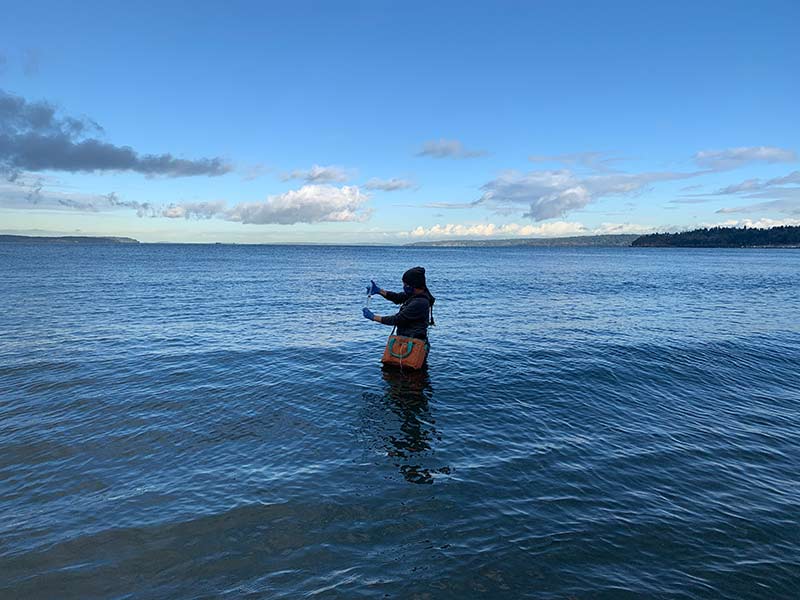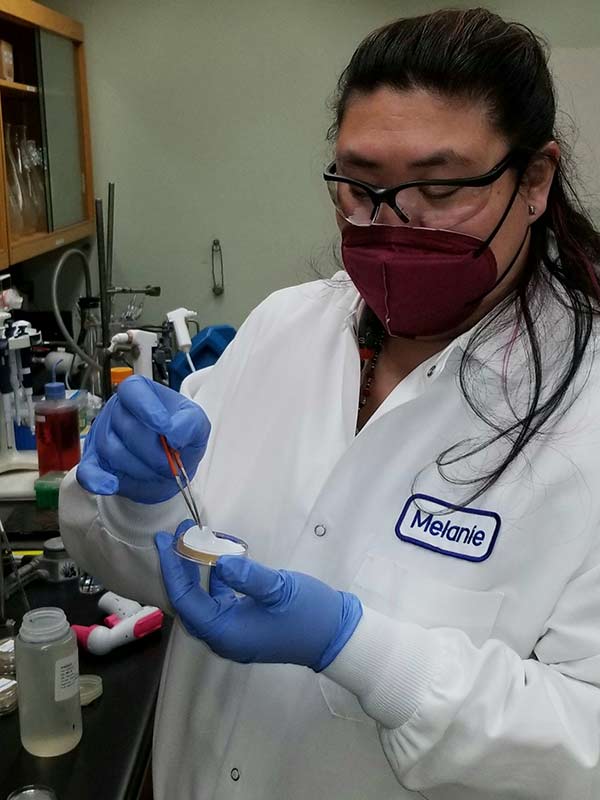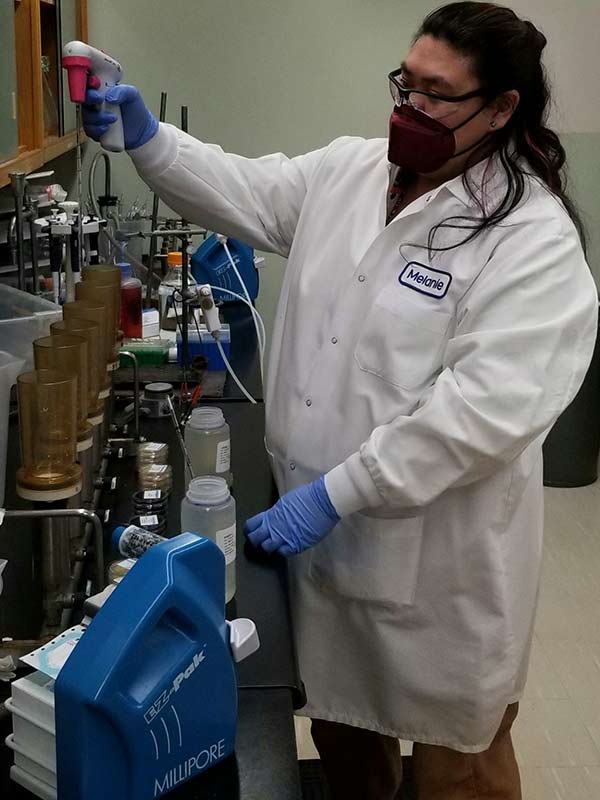Trouble Call Program and Water Quality Emergency Response
We support the King County Wastewater Treatment Division by collecting environmental samples during wastewater overflow events and analyzing them.
Trouble Call Program
The primary role of our work is to support the King County Wastewater Treatment Division by collecting environmental samples during treatment plant overflow events and analyzing them. The Trouble Call program operates 24 hours a day, 7 days a week. In response to a trouble call, we sample and document fecal indicator bacteria (FIB) in the environment after an overflow event.
When needed, our team also responds to other kinds of water quality emergencies. A variety of laboratory tests are available for these incidents.
This program allows us to:
- Activate field personnel in response to incidents.
- Activate field vehicles.
- Collect water quality samples as soon as possible.
- Fast-track sample analysis to address if there are any public health concerns.
- Coordinate environmental data sharing with our partner agencies.
When we respond to an event, a field investigation is done to document the incident and help determine if there are public health related or other environmental impacts in the surrounding area. If samples are collected our laboratory scientists are notified immediately. Upon return to the lab the samples are analyzed immediately. This coordination between field and laboratory activities is key to assuring that the emergency samples are analyzed, and the data reported as quickly as possible.

Water quality emergency response
Separate from the Trouble Call Program, our work helps to protect King County’s natural environment by providing these emergency services:
- Wastewater incident response
- Fish kill response
- Hazardous material response support
- Public health support
We have a wide variety of resources that we use to respond to water quality emergencies and incidents. Our experienced field scientists work internally with expert water quality planners to coordinate fast and thorough responses to events.
Available resources include:
- Research vessels
- Sample analysis services
- Diverse scientific expertise – chemists, biologists, field scientists, etc.
- Field data collection equipment:
- pH, temperature, conductivity (salinity), algal pigment, and dissolved oxygen probes; and
- current/flow meters.
- Mapping software (ArcGIS)
Some of the laboratory tests available for emergency samples include:
- Microtox testing – a highly sensitive test that can detect tiny amounts of toxic substances in a variety of samples.
- Turbidity and total suspended solids – measuring water cloudiness.
- Nutrient testing – measuring ammonia, phosphorous, and more.
- Algae identification and toxin measurement.
- Bacteria testing – measuring fecal indicator bacteria (FIB), E. coli and other fecal coliform bacteria.
- Polychlorinated biphenyls (PCB) testing “the group of human-made chemicals frequently used in electrical equipment like power transformers.
- Testing for organic (carbon-containing) compounds of concern.
- Heavy metal testing – measuring toxic metals (like mercury) in the environment.


Protecting water resources
From collection, to testing and reporting, we use specialized chain-of-custody tracking and standard operating procedures to generate data that is high quality, accurate, and timely. This data is used by enforcement agencies and must be dependable and accurate. Emergency samples may be fast tracked so that the data is available within 24 hours.
We follow carefully developed procedures to make sure that data generated from our response can be used for regulatory and enforcement purposes. Fast response to environmental emergencies and incidents is critical to protecting public health and our environment. We are always working to make sure that these events are documented and responded to appropriately.

 Translate
Translate